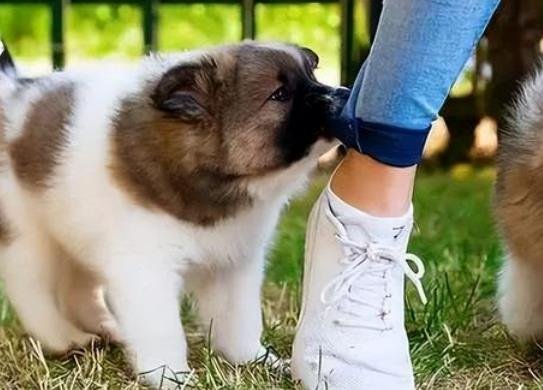The biting behavior is mainly the most direct and effective measure to prevent and directly stop criminal behavior and external attacks. This training is somewhat dangerous. If you have friends who want to train their own dogs, it is recommended to use dog training gear!
1. Cultivation of ferocity
Choose an experienced assistant trainer, hide after appropriate disguise, and the dog owner will tie the dog to a place at a certain distance from the assistant trainer’s hiding place, and the dog owner will stand beside the dog. The assistant trainer holds a stick in his right hand and wears a sleeve on his left hand. He appears from the hiding place and makes various violent movements from far to near, hitting the ground with a whip or stick, attacking and retreating from time to time, and doing everything possible to tease the dog and make it bark. The dog owner encourages the dog to pounce on the assistant trainer and rewards it with the command “good”.
After the ferocity of the dog is aroused, the assistant trainer can walk to the dog, and when the dog opens its mouth, he will hand over the sleeve for the dog to pounce and bite. When the dog bites and refuses to let go, the assistant trainer can take off the sleeves and continue to tease the dog with a stick to make the dog hostile to the assistant trainer; at this time, the assistant trainer should retreat to a hidden place while teasing the dog. After several times of this training, when the dog can successfully complete the training subjects, you can proceed to the next step and training.

2. Training a single dog to bite
Select a training venue in advance, and the assistant trainer hides in the training venue. After the dog owner leads the dog to the training venue, let the dog sit upright facing the hidden place of the assistant trainer. The dog owner takes a half-squat position and gives the dog the command “Attention”, and the assistant trainer makes a sound to alert the dog. After a short pause, the assistant trainer emerges from a hidden place holding a stick or a tree branch, constantly hitting the ground and making sneaky movements. When the dog’s ferocity reaches the level of being able to bite the assistant trainer, the dog owner should issue the command “attack” to let the dog bite; at this time, the assistant trainer should act in fear and retreat, and finally flee in defeat. The dog owner continues to issue the commands “attack” and “good” to encourage the dog, and then ends the training.
3. Training the dog to “release”
After repeated training with the above method, when the dog dares to attack and bite the assistant trainer, and keeps biting, the dog should be trained to “release”. The basic method is: when the dog owner orders the dog to bite the assistant trainer’s sleeve, the assistant trainer resists for a while, then lowers his arm, lets the sleeve close to the ground, and stays still. At this time, the dog owner gives the command “release” and pulls the leash back slightly. Some dogs will let go as soon as they hear the owner’s “release” command, but some dogs will not let go in this case. The trainer should repeat the command and pull the leash backwards, cut the dog’s nose bridge or pinch the dog’s thigh with the left hand to force the dog to let go. When the dog develops a preliminary conditioned reflex, gradually increase the training distance to reach the level of commanding the dog to “release” from a longer distance. Repeat this training many times, and your dog will become very aggressive. As long as you give the order, your dog will pounce on any suspicious person!








